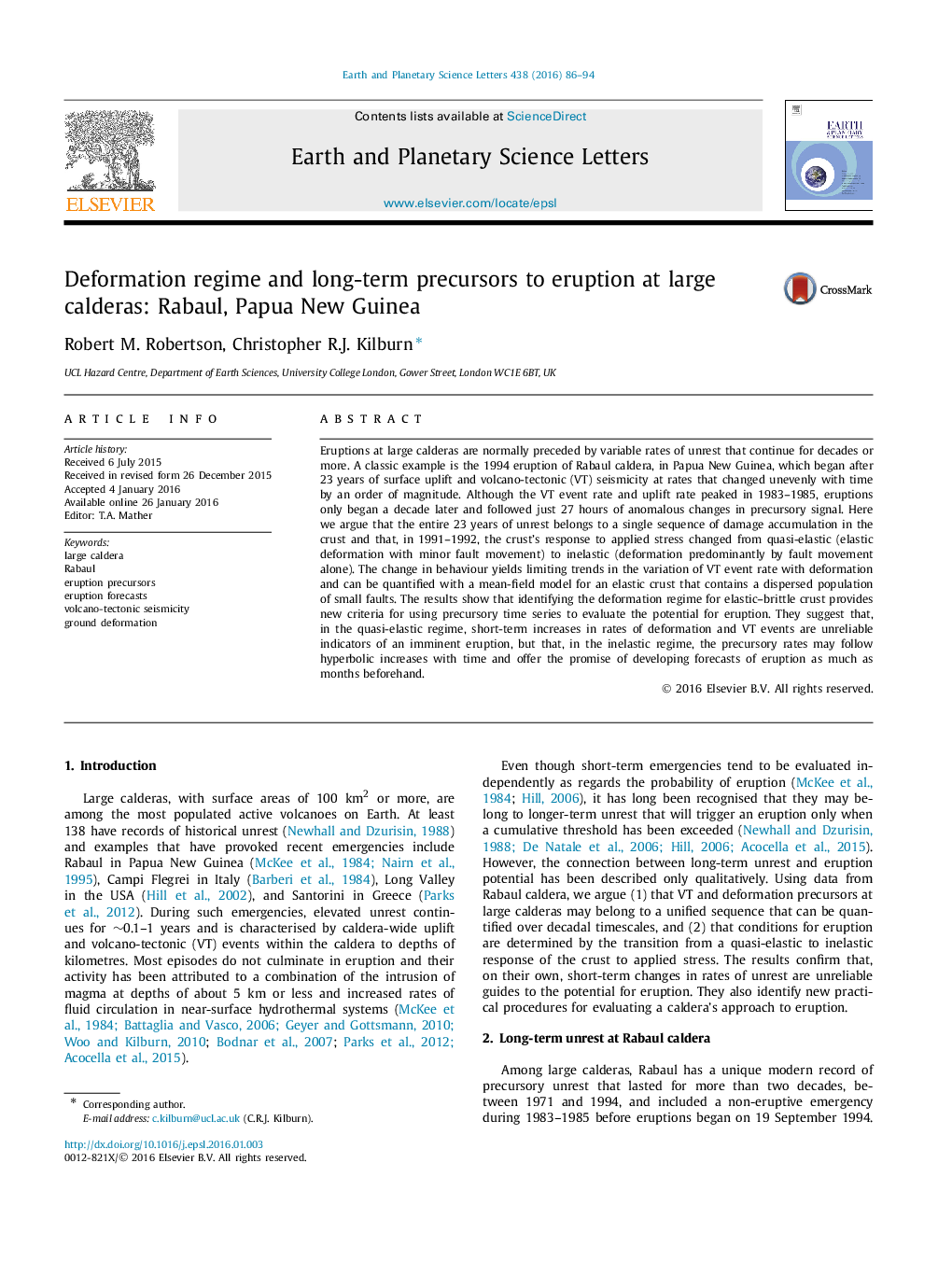| Article ID | Journal | Published Year | Pages | File Type |
|---|---|---|---|---|
| 4676937 | Earth and Planetary Science Letters | 2016 | 9 Pages |
•Volcano-seismicity – deformation plots are field descriptors of evolving stress.•Pre-eruptive stress in the crust evolves from quasi-elastic to inelastic.•Single sequences of unrest can be quantified for decades before eruption.•Eruptions are favoured during inelastic deformation.
Eruptions at large calderas are normally preceded by variable rates of unrest that continue for decades or more. A classic example is the 1994 eruption of Rabaul caldera, in Papua New Guinea, which began after 23 years of surface uplift and volcano-tectonic (VT) seismicity at rates that changed unevenly with time by an order of magnitude. Although the VT event rate and uplift rate peaked in 1983–1985, eruptions only began a decade later and followed just 27 hours of anomalous changes in precursory signal. Here we argue that the entire 23 years of unrest belongs to a single sequence of damage accumulation in the crust and that, in 1991–1992, the crust's response to applied stress changed from quasi-elastic (elastic deformation with minor fault movement) to inelastic (deformation predominantly by fault movement alone). The change in behaviour yields limiting trends in the variation of VT event rate with deformation and can be quantified with a mean-field model for an elastic crust that contains a dispersed population of small faults. The results show that identifying the deformation regime for elastic–brittle crust provides new criteria for using precursory time series to evaluate the potential for eruption. They suggest that, in the quasi-elastic regime, short-term increases in rates of deformation and VT events are unreliable indicators of an imminent eruption, but that, in the inelastic regime, the precursory rates may follow hyperbolic increases with time and offer the promise of developing forecasts of eruption as much as months beforehand.
